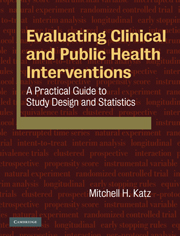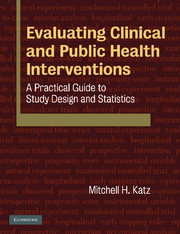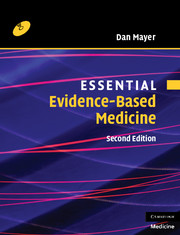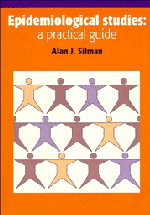Epidemiological Studies
Following on in the footsteps of its acclaimed and popular predecessor, this new edition builds on the successful features that engaged readers of the first edition: it explains the principles and practice of epidemiology and serves as a handbook for those who wish to do epidemiology; it uses relevant exercises and examples, taken from real life, to illustrate how to set up a study; it aims to help produce valid results that will satisfy grant bodies, ethical committees and journal editors; ultimately it bridges the gap between theory and practice. By making the subject so easily accessible, it will be an excellent introduction for anyone who is training in epidemiology and public health, and for all those involved in medical research. This edition includes numerous improvements and several new chapters which will further enhance its appeal.
- An excellent introduction to the various epidemiological methods currently available
- Emphasis on practical applications with numerous illustrative examples
- New sections on: Comparing Rates, Choice of Study Design, Conducting a Pilot Study and Crude, Age-Specific and Standardised Rates
Reviews & endorsements
Review of first edition '… lucid explanations and succinct, well-chosen examples … make the book a rapid read … Readers who follow his guidance will indeed learn painlessly to do epidemiology.' British Medical Journal
'The text is concise and easy to read … Alan Silman's book is a very useful and user-friendly volume as an introduction to the field of epidemiology.' Epidemiology and Infection
'I think this is a useful book for those embarking on their first epidemiological study.' Public Health
'… this book could serve as a good, easy to read, textbook on epidemiological research.' European Journal of Public Health
Product details
June 2002Paperback
9780521009393
256 pages
247 × 176 × 15 mm
0.415kg
20 b/w illus. 20 tables 20 exercises
Available
Table of Contents
- Part I. Introduction:
- 1. Scope of epidemiological enquiry and overview of main problem areas
- Part II. Measuring the Occurrence of Disease:
- 2. Which measure of disease occurrence?
- 3. Comparing rates: between and within populations
- Part III. Studying Associations between Risk Factors and Disease:
- 4. Which type of study?
- 5. Which measure of association?
- Part IV. Selection of Populations and Samples to Study:
- 6. Studies of disease occurrence I: identification of the population
- 7. Studies of disease occurrence II: assessing disease status in study populations
- 8. Studies of disease causation I: Selection of subjects for case-control studies
- 9. Studies of disease causation II: Selection of subjects for cohort (longitudinal) studies
- Part V. Information from Epidemiological Studies:
- 10. Collecting information
- 11. Obtaining valid information
- 12. Repeatability
- 13. Maximising participation
- 14. Conducting a pilot study
- Part VI. Analysis and Interpretation of Epidemiological Data:
- 15. Preparation of survey data for statistical analysis
- 16. Introductory data analysis I: descriptive epidemiology
- 17. Introductory data analysis II: analytical epidemiology
- 18. Confounding
- 19. Bias
- Part VII. Other Practical Issues:
- 20. Ethical issues in epidemiology
- 21. The costs of epidemiological studies
- Index.











